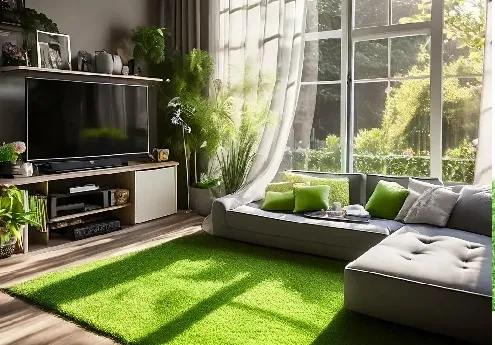
- Afrikaans
- Arabic
- Belarusian
- Bengali
- Czech
- Danish
- Dutch
- English
- Esperanto
- Estonian
- Finnish
- French
- German
- Greek
- Hindi
- Hungarian
- Icelandic
- Indonesian
- irish
- Italian
- Japanese
- kazakh
- Rwandese
- Korean
- Kyrgyz
- Lao
- Latin
- Latvian
- Malay
- Mongolian
- Myanmar
- Norwegian
- Persian
- Polish
- Portuguese
- Romanian
- Russian
- Serbian
- Spanish
- Swedish
- Tagalog
- Tajik
- Thai
- Turkish
- Turkmen
- Ukrainian
- Urdu
- Uighur
- Uzbek
- Vietnamese
indoor turf installation
Nov . 20, 2024 11:43 Back to list
The Importance and Process of Indoor Turf Installation
Indoor turf installation has become an increasingly popular choice among sports facilities, schools, and recreational centers. As sports evolve, so too does the need for versatile and durable playing surfaces that can withstand the demands of rigorous activities. Indoor turf offers numerous advantages, including safety, performance improvement, and cost-effectiveness. In this article, we will explore the importance of indoor turf installation and the essential steps involved in the process.
Advantages of Indoor Turf
One of the primary benefits of indoor turf is its ability to provide a consistent playing surface year-round, regardless of weather conditions. Unlike traditional grass, turf does not require sunlight, and it remains lush and green even in the dead of winter. This attribute is particularly vital for indoor sports facilities that aim to maintain a high standard of play and provide training opportunities throughout the year.
Safety is another major factor when considering indoor turf. High-quality synthetic grass is designed to reduce injury risks, offering a softer surface that can absorb impacts better than hard floors or concrete. This feature is especially important for sports such as soccer, football, and lacrosse, where athletes frequently fall and roll. Moreover, many indoor turf products are resistant to slipping, further promoting player safety.
Another advantage is the customization that indoor turf installation allows. Facility owners can select from a variety of colors, textures, and pile heights to create an aesthetically pleasing environment that meets specific needs. Whether for training purposes, recreational use, or professional competitions, proper turf selection can enhance the overall experience for athletes and spectators alike.
The Installation Process
While the benefits of indoor turf are clear, the installation process is equally crucial to ensure long-lasting performance. Here’s a step-by-step guide to indoor turf installation
1. Site Assessment The first step involves evaluating the space intended for installation. Factors such as the dimensions of the area, existing surfaces, drainage needs, and any potential obstacles must be assessed to determine the best approach.
indoor turf installation

2. Choosing the Right Turf Selecting the appropriate turf is pivotal. There are various types of indoor turf available, each designed for specific activities. Considerations include pile height, density, and whether to choose an infilled or non-infilled system. Consulting with a specialist can help facility owners make informed decisions.
3. Preparing the Subbase A solid subbase is essential for turf longevity. Typically, a combination of crushed stone and sand is used to create a stable foundation that promotes proper drainage. This preparation helps to prevent issues such as pooling water and uneven surfaces, which can lead to injuries.
4. Turf Layout Before actual installation, the turf should be laid out to ensure proper alignment and aesthetics. This step involves positioning the rolls of turf according to the intended design and cutting it to fit the specific area.
5. Installation The turf is then secured to the prepared subbase. This can be achieved using adhesive or fastening systems, depending on the type of turf and facility requirements. Special care must be taken to seam the edges accurately to avoid tripping hazards.
6. Infill Application For certain types of turf, infill materials such as rubber or sand may be required. This application enhances the turf's durability and provides a more natural feel underfoot. The infill should be evenly distributed and brushed into the fibers to achieve the desired height and performance.
7. Final Inspection and Maintenance After installation, a thorough inspection should be conducted to ensure that the turf is secure and meets safety standards. Regular maintenance, including cleaning and occasional replacement of infill materials, is necessary to keep the playing surface in optimal condition.
Conclusion
Indoor turf installation is a significant investment for any sports facility. Its benefits, including year-round usability, safety, and aesthetic appeal, provide a strong case for consideration. By understanding the installation process and carefully selecting the right materials, facility owners can create an indoor space that enhances athletic performance while ensuring safety and enjoyment for all users. The evolution of sports demands high-quality surfaces, and indoor turf is clearly at the forefront of this change.
-
The Benefits of Artificial Turf for Indoors
NewsJul.15,2025
-
How Artificial Grass Suppliers Ensure Quality Products
NewsJul.15,2025
-
Artificial Grass and Pets: A Space for Relaxation
NewsJul.08,2025
-
Balcony & Outdoor Decoration with Artificial Grass
NewsJul.08,2025
-
Best Indoor Artificial Grass for Home
NewsJul.07,2025
-
Best Pet Turf for Dogs: Safe & Durable Artificial Grass Options
NewsJul.07,2025
Products categories









